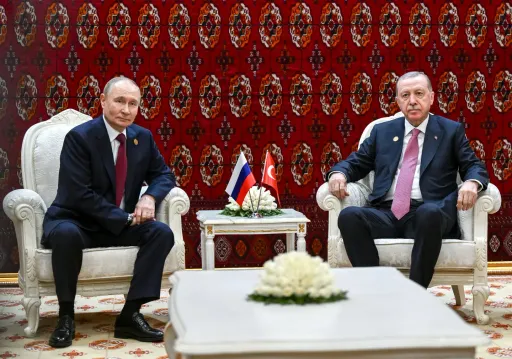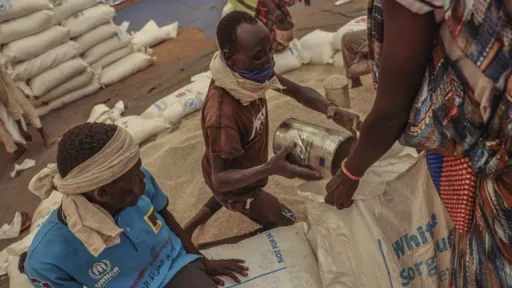By Brian Okoth
Tunisian Dinar is the strongest currency in Africa, followed by the Libyan Dinar and Moroccan Dirham.
A TRT Afrika analysis of the exchange rates of the respective African nations’ currencies against the US Dollar on Tuesday, July 25, 2023 showed that the Ghanaian Cedi and Botswana's Pula rounded out Africa’s five strongest currencies.
As at July 25, one US Dollar was equivalent to 3.04 Tunisian Dinars. The Libyan Dinar exchanged for 4.77, while the Moroccan Dirham went for 9.79. The Ghanaian Cedi exchanged for 11.28.
The figures were obtained from real-time currency conversion website xe.com and Forbes’ currency conversion calculator. The figures are bound to change on a daily basis, depending on macro-economic factors.
The adjustments, however, won’t be so major overnight, unless a spectacular or radical developments happen in a country.
Seychelles’ Rupee (14.09), Eritrean Nakfa (15.00), Namibian Dollar (17.56), South African Rand (17.59) and Eswatini’s Lilangeni (17.62) completed Africa’s ten strongest currencies as at July 25.
Why dollar is standard measure
TRT Afrika used the US Dollar as the standard measure for currency strength. The American dollar is the primary reserve currency for the global economy. It accounts for more than 85% of the trading volume in the world’s forex market.
Lesotho’s Loti takes the 11th position in Africa, exchanging at 17.97. Zambian Kwacha is 12th, exchanging at 19.33, followed by Egyptian Pound (30.90), Mauritanian Ouguiya (37.95) and Mauritian Rupee (45.59) respectively.
Ethiopian Birr comes at position 16 on the continent, trading at 55.09. It is followed by Gambian Dalasi (59.60), Mozambican Metical (63.25), Cape Verdean Escudo (99.85) and South Sudanese Pound (130.26), rounding out Africa’s 20 strongest currencies.
Weakest currencies
Central African nation, Sao Tome and Principe, has the continent’s weakest currency, with its Dobra trading at 22,823.99 against the US Dollar. Sao Tome is a small nation of about 220,000 people.
Sierra Leonean Leone is the second-weakest currency, behind the Dobra, trading at 19,750 against the US Dollar. It falls behind Guinean Franc (8,604.43), Madagascar’s Malagasy Ariary (4,510.69) and Ugandan Shilling (3,651.68).
Other nations, whose currencies feature in the bottom ten in Africa, are Burundian Franc (2,831.30), DRC Franc (2,559.00), Tanzanian Shilling (2,448.30), Rwandan Franc (1,175.09) and Malawian Kwacha (1,053.73).
East African nation, Kenya, ranks 22nd in Africa, with its shilling trading at 142.15 against the US Dollar.
The weakening of the shilling against the US Dollar has sparked sporadic protests in Kenya, with demonstrators accusing the government of doing little to come up with effective policies that cushion the shilling against further depreciation.
Nigerian Naira ranks 43rd in Africa, exchanging at 793.32 against the American dollar. With a gross domestic product (GDP) of $477 billion, Nigeria remains Africa’s largest economy, ahead of Egypt and South Africa.
Currency strength determinants
Currency strength is determined by a number of factors, including its demand and supply in the foreign exchange markets, the interest rates of the central bank, the inflation and growth in the domestic economy.
A country's balance of trade and political stability also play important roles.
American business magazine, Forbes, says a strong government with a well-established rule of law and a history of constructive economic policies helps in attracting investment, therefore promoting a strong currency.
A highly strong currency, despite keeping the costs of imports low, makes a country’s exports more expensive, thus hurting a nation's trade competitiveness.
A weak currency, on the other hand, makes imports more expensive, and therefore boosts domestic inflation, Forbes says.
“So, the ideal course is to aim down the middle and avoid destabilising fluctuations,” according to Forbes.
Below is the list of African currencies: from the strongest to the weakest, as of July 25, 2023 forex rates:
1. Tunisian Dinar: 3.04
2. Libyan Dinar: 4.77
3. Moroccan Dirham: 9.79
4. Ghanaian Cedi: 11.28
5. Botswana's Pula: 13.06
6. Seychelles' Rupee: 14.09
7. Eritrean Nakfa: 15.00
8. Namibian Dollar: 17.56
9. South African Rand: 17.59
10. Eswatini Lilangeni: 17.62
11. Lesotho Loti: 17.97
12. Zambian Kwacha: 19.33
13. Egyptian Pound: 30.90
14. Mauritanian Ouguiya: 37.95
15. Mauritian Rupee: 45.59
16. Ethiopian Birr: 55.09
17. Gambian Dalasi: 59.60
18. Mozambican Metical 63.25
19. Cape Verdean Escudo: 99.85
20. South Sudanese Pound: 130.26
21. Algerian Dinar: 135.09
22. Kenyan Shilling: 142.15
23. Djiboutian Franc: 178.09
24. Liberian Dollar: 184.75
25. Zimbabwean Dollar: 361.90 (the country also uses the US Dollar as its legal tender)
26. Comorian Franc: 445.25
27. Somali Shilling: 570.77
28. Gabon (Central African Franc): 594.08
29. Cameroon (Central African Franc): 594.08
30. Central African Republic (Central African Franc): 594.08
31. Chad (Central African Franc): 594.08
32. Congo (Central African Franc): 594.08
33. Equatorial Guinea (Central African Franc): 594.08
34. Benin (West African Franc): 594.42
35. Côte d'Ivoire (West African Franc): 594.42
36. Guinea-Bissau (West African Franc): 594.42
37. Senegal (West African Franc): 594.42
38. Niger (West African Franc): 594.42
39. Burkina Faso (West African Franc): 594.42
40. Mali (West African Franc): 594.42
41. Togo (West African Franc): 594.42
42. Sudanese Pound: 601.50
43. Nigerian Naira: 793.32
44. Angolan Kwanza: 827.50
45. Malawian Kwacha: 1,053.73
46. Rwandan Franc: 1,175.09
47. Tanzanian Shilling: 2,448.30
48. DRC Franc: 2,559.00
49. Burundian Franc: 2,831.30
50. Ugandan Shilling: 3,651.68
51. Madagascar’s Malagasy Ariary: 4,510.69
52. Guinean Franc: 8,604.43
53. Sierra Leonean Leone: 19,750.00
54. Sao Tome and Principe's Dobra: 22,823.99
























